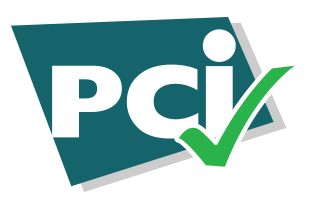
A bonding is a Treasury Bank investment tool where community resident act a surety for Treasury Bank to extends purpose credit based on community investment program expenses in benefit of Treasury Bank members. Bonds are held in a Treasury Bank Account to support community investment activity for a set period of time at an agreed interest rate return in cash to the bondholders.
Bondholders are accountholders that are paid income or expense of the community investment. Income is called the coupon or yield minus. Treasury Bank’s interest based on the original issue discount of the face value of the bond.
Investor accountholders can purchase bonds through the Treasury Bank website with cash credit leverage or cash payment.
What is a Bond?
A bond is a fixed-income securities used by Treasury Bank and in return collect bond interest, operational fees, custody fees and clearing fees as compensative expenses.
Bonds are exchanged for purpose credit as margin for common and preferred stock that used to finance projects and operations. Bondholders are “Buyers and Creditors” and bond issuers are “Seller and Debtor” within a bond purchase agreement. Bond purchase agreement details include the end date when the principal of the bond is due to be paid to the Bondholder and Treasury Bank and usually include the terms for variable or fixed interest payments made by the investment.
How Bonds Work?
Bonds are debt instruments and represent as a signature loans made to a community investment program as a bondholder and accountholder that has a Bond Investment Account with Treasury Bank. Bonds allow investors to assume the first in line role of a paramount income entitlements and rights in a community investment program issued by Treasury Bank.
The initial price of a community investment bonds is typically set at par or $1,000 face value per bond. The actual market price of a bond depends on the credit quality of the issuer, the length of time until expiration, and the coupon rate compared to the general interest rate environment. The face value of the bond is what is paid once the bond matures
Characteristics of Bonds
- Face value or Par Value: The value of the bond at maturity and the reference amount the bond issuer uses when calculating interest payments.
- Coupon Rate: The rate of interest the bond issuer will pay on the face value of the bond, expressed as a percentage.
- Coupon Dates: The dates on which the bond issuer will make interest payments.
- Maturity Date: The date on which the bond will mature and the bond issuer will pay the bondholder the face value of the bond.
- Issue Price: The price at which the bond issuer originally sells the bonds. In many cases, bonds are issued at par.
Bond Prices and Interest Rates
Unlike fuciurate stock market bonds, Treasury Bank bond’s price is a straight forward with stable rate of return. If an investor holds a bond to maturity they will get their principal back plus interest. However, a bondholder can sell their bonds in the open market, where the price can fluctuate. Treasury Bank’s sale price varies inversely with interest rates. When interest rates go up, bond prices fall to have the effect of equalizing the interest rate on the bond with prevailing rates, and vice versa.
The issuer of a fixed-rate bond promises to pay a coupon based on the face value of the bond. For a $1,000 par, 10% annual coupon bond, the issuer will pay the bondholders investor $100 each year.
Investors bid up to the price of the bond until it trades at a premium that equalizes the prevailing interest rate environment—in this case, the bond will trade at $2,000 so that the $100 coupon represents 5%.Likewise, if interest rates soared to 15%, then an investor could make $150 from the government bond and would not pay $1,000 to earn just $100. This bond would be sold until it reached a price that equalized the yields, in this case to a price of $666.67.
Yield-to-Maturity (YTM)
The yield-to-maturity (YTM) is the total return anticipated on a bond if it is held until the end of its lifetime. Yield to maturity is considered a long-term bond yield but is expressed as an annual rate.
YTM is the internal rate of return of an investment in a bold if the investor holds the bond until maturity and if all payments are made as scheduled. YTM evaluates the attractiveness of one bond relative to other bonds of different coupons and maturity in the market. The formula for YTM involves solving for the interest rate.
How To Invest in Bonds
investors can buy them like stocks. The bonds are typically sold directly via Treasury Bank Portal via its website at treasurybank.org/portal.
What Determines a Bond’s Coupon Rate?
Two features of a bond—credit quality and time to maturity—are the principal determinants of a bond’s coupon rate. If the issuer has a poor credit rating, the risk of default is greater, and these bonds pay more interest. Bonds that have a very long maturity date also usually pay a higher interest rate. This higher compensation is because the bondholder is more exposed to interest rate and inflation risks for an extended period.
How Are Bond’s Rated?
Treasury Bonds non-government community private debt. Credit ratings are determined by it planning and earning projections generated by credit rating professional account agents and agencies. Treasury Bank bonds are outside the rating agents like Standard and Poor’s, Moody’s, and Fitch Ratings and are high risk quality bonds but are called “investment grade” and include debt issued by the U.S. government and very stable companies, such as many utilities. Treasury Bank is a investment authority and its Bonds that are considered private investment with community residents that are guaranteed by individual or government surety against default by offering “high yield” In other words, its have a higher risk of default in the future and investors demand a higher coupon payment to compensate them for that risk.
What Is Duration?
Bonds will rise or fall in value as interest rates change based on the profit and loss statements. The sensitivity to changes in the interest rate environment is called “duration.” The use of the term duration in this context can be confusing to new bond investors because it does not refer to the length of time the bond has before maturity. Instead, duration describes how much a bond’s price will rise or fall with a change in interest rates.
What is the eligibility of bond account?
1. An investor in a bond account executed in connection with the Act contracts must complete and submit with the account and bonds attachments.
2. The surety must have the completed form notarized.
2. No Corporation, partnership, or other unincorporated association or firm are acceptable as a bond accountholder. All bond accountholders ( must be a natural person) and members of a partnership are also acceptable However, any partnership or an association, or any co-partner or member thereof, is the principal of the investment is not acceptable. An accountholder will not include any financial interest in assets connected with the principal on the account.
3. Accountholder must be a citizenship of landowner in the community where investment is offered and is a requirement for accountholders for contracts and bonds when the contract is awarded in the district of service. However, when the Investment is located in an outlying area or a foreign country, the bond accountholders is only required to be a permanent resident of the area or country in which the investment is located.
4. All signature cards of the account submitted must be originals. Signature Cards of the bond account bearing reproduced signatures are not acceptable. An authorized person must sign the bond account. Any person signing in a representative capacity (e.g., an attorney-in-fact) must furnish evidence of authority if that representative is not a member of a firm, partnership, or joint venture, or an officer of the corporation involved.




